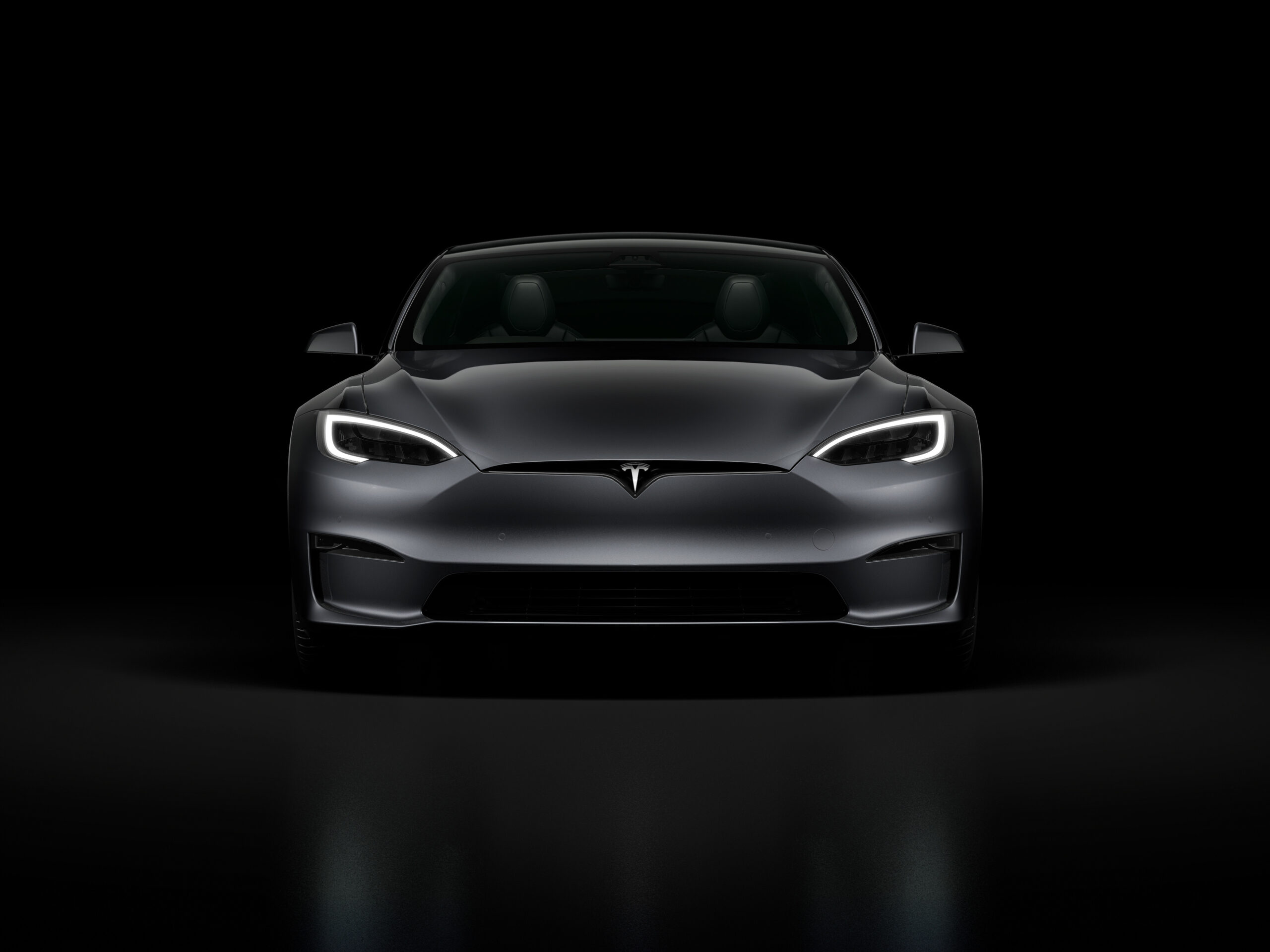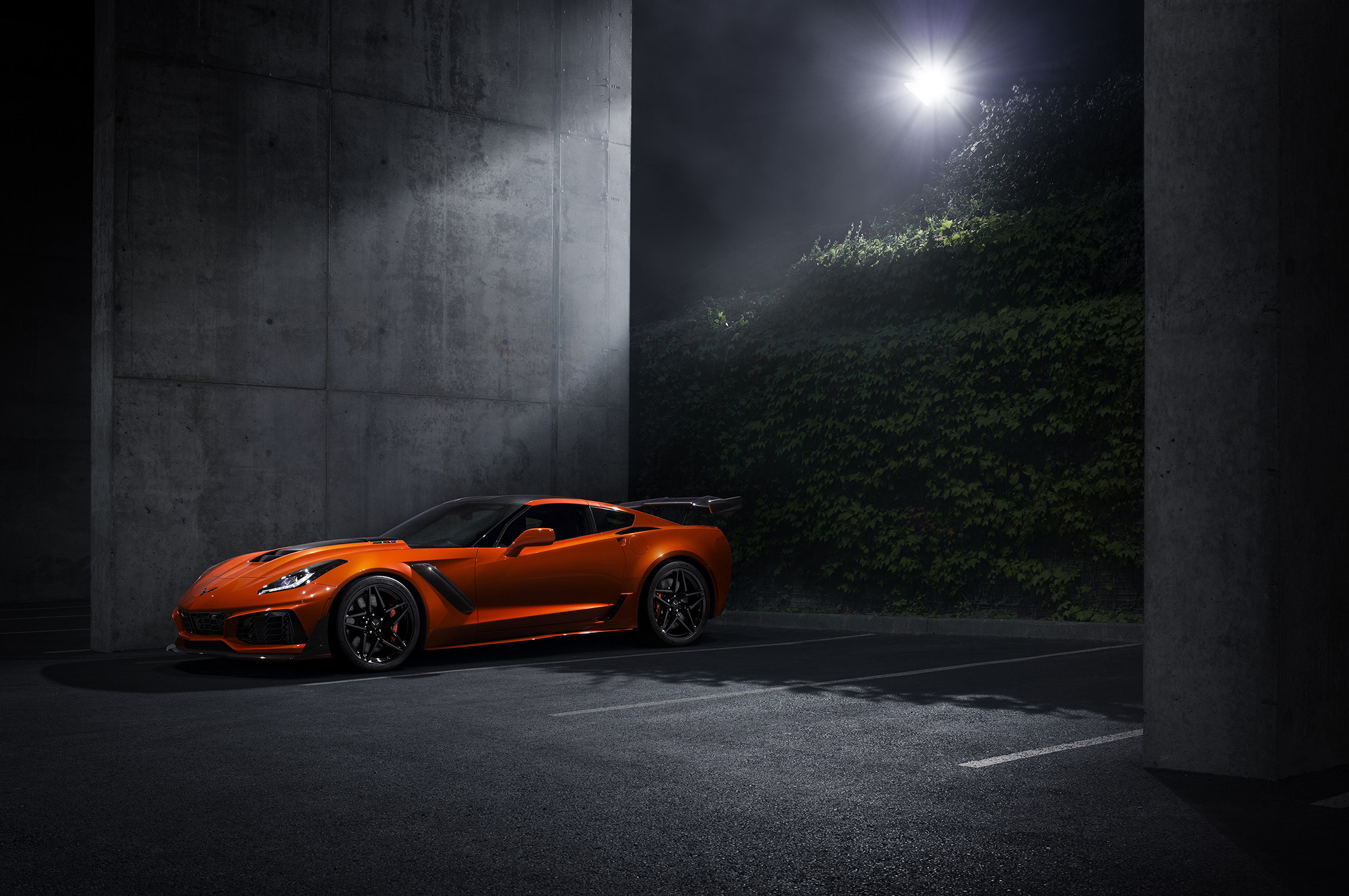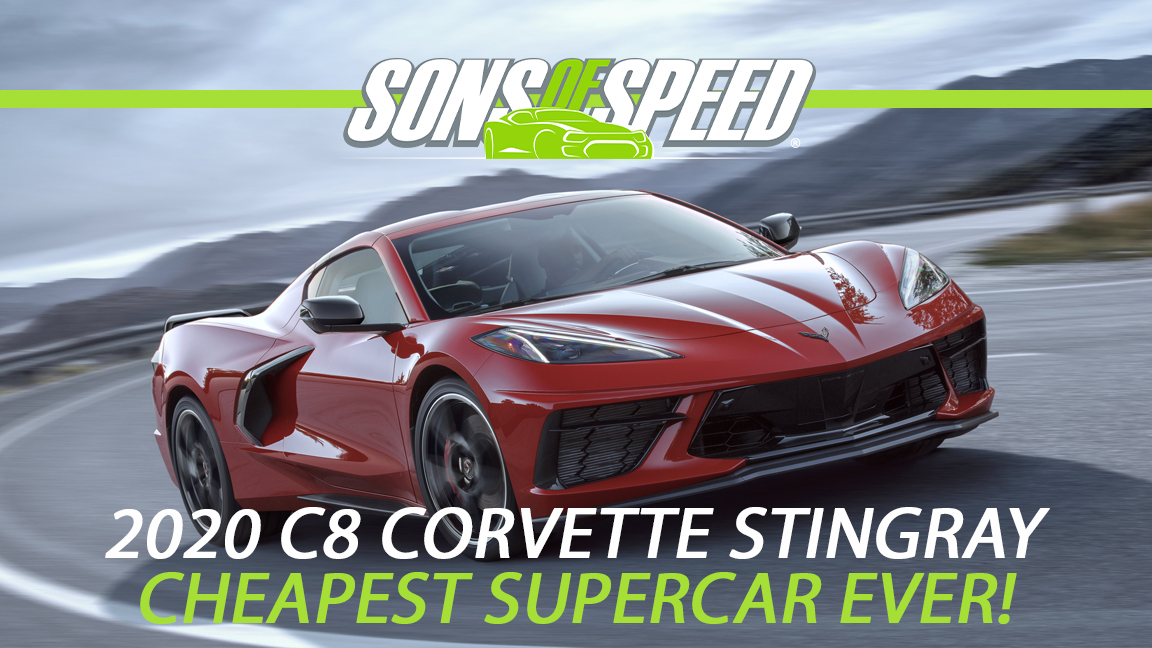2015 Corvette Stingray Z51
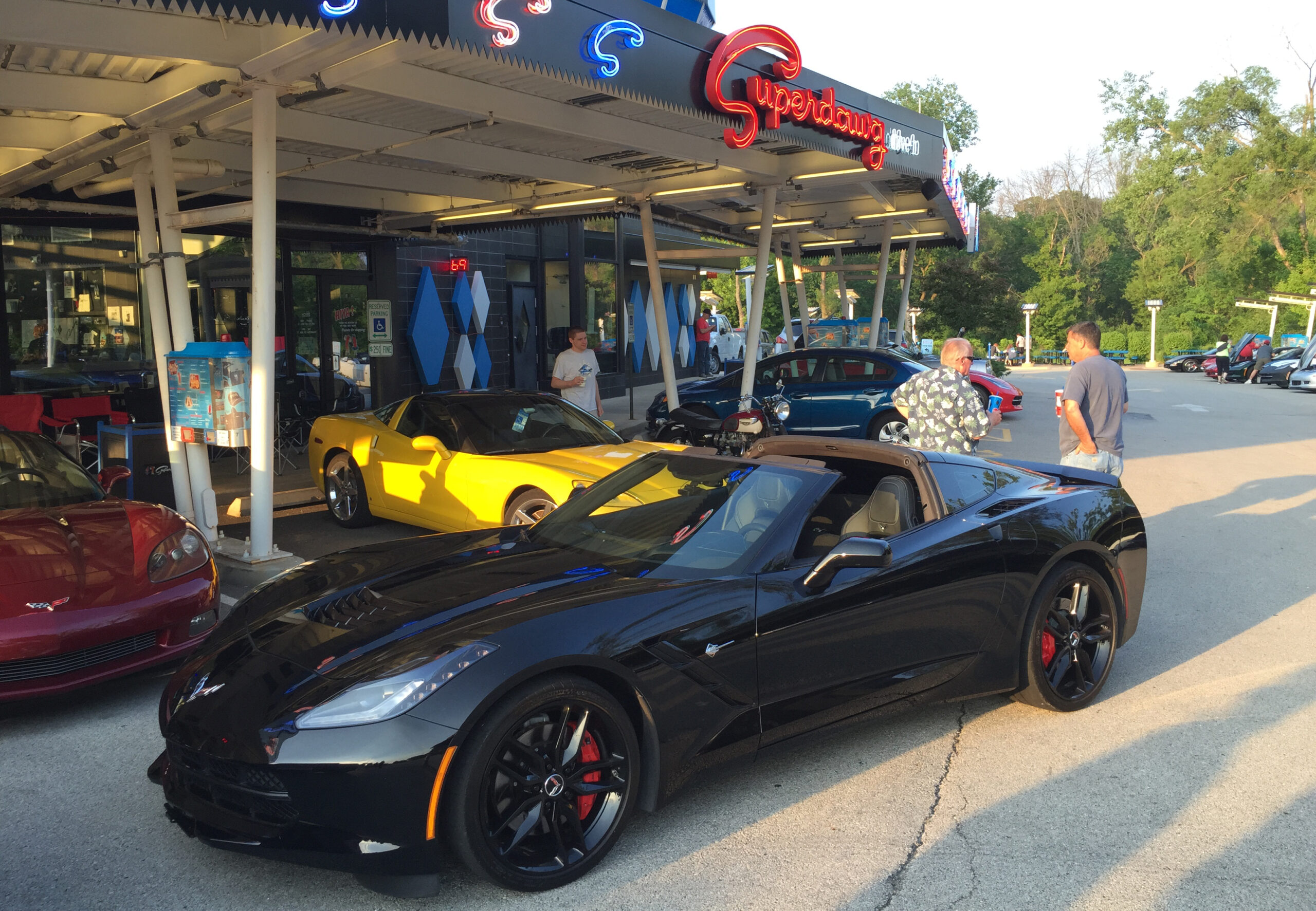
On January 17th, 1953 at the Waldorf Astoria hotel in New York City, Chevrolet unveiled something to the world that forever changed the American car landscape. With the quintessential 1950’s name of “GM Motorama,” Chevrolet showed off its white, two-door convertible sports car with a red interior – and the Corvette legacy was born. Fast forward 60 years to January 13th, 2013, where a new legacy of Corvette was unveiled at the Detroit Auto show, the seventh-generation C7 Corvette, this time resurrecting the Stingray name dormant since 1976.
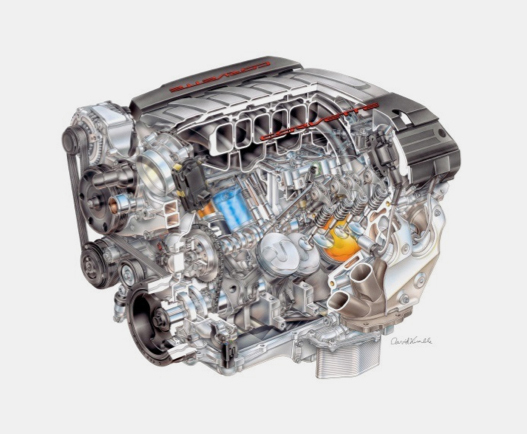
The C7 has come a long way since the days of the 150-horsepower “blue flame” 6 cylinder found in that very first Corvette. Today’s Stingray comes packed with a nearly all-new 6.2 liter small-block LT1 V8 rated at 455 horsepower and 460 pound feet of torque with the standard exhaust, and 460 horsepower and 465 pound feet of torque when optioned with the adjustable performance exhaust system found in our test car. The only parts retained from the Corvette’s previous C6 engine are the starter bolts, piston pin, pin clip and valve retainer and keeper. While the new LT1 traces its heritage directly back to the ubiquitous 1955 Chevy small-block sporting a cam-in-block, two-valves-per-cylinder old-school architecture, this trick new engine features direct injection, continuously variable valve timing and cylinder deactivation (Active Fuel Management in Chevy-speak) to achieve not only its awesome power, but nearly 30 mpg on the highway by shutting off half its cylinders at cruising speeds. In a fit of perfect irony, this car is likely to be both its owner’s most powerful and most fuel efficient vehicle. Instead of the original a two-speed Powerglide automatic transmission from 1953, C7 buyers can now opt for a standard 7-speed manual or a new-for-2015 8-speed automatic (the 2014 model offered a 6-speed automatic).
The exterior design of the Stingray is both striking and beautiful, a design – like the first and second Corvette generation – that will stand the test of time. The front fascia and headlights reflect a very Italianesque look, so much so that we ran into one gas station attendant who, peering out the window, asked how we liked our Ferrari. The back of the car won’t be mistaken for anything Italian though, and despite it missing the trademark round taillights, it still conveys to everyone trying to catch up that this is a Corvette. The car manages to appear sharp and aggressive without sporting any angular points and personally, the proportions look good – no big butt, no weird panel creases… it just all works.
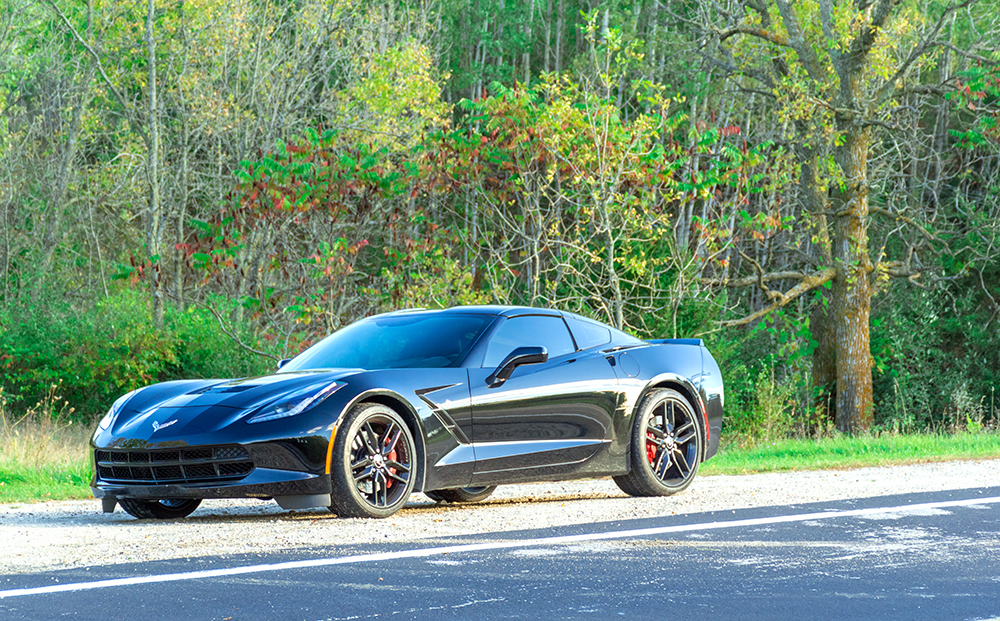
In a move that would have engineer, racer and savior of the early Corvette program Zora Arkus-Duntov jumping for joy, every vent, scoop and duct is truly functional (really, is there anything worse than a fake hood or side scoop?). The hood vents both allow for engine heat to escape and provide significant downforce at speed by moving air through the grill and over the top of – rather than lift-inducing under – the car. The vents near the Stingray emblems on each front quarter panel allow excess air from the brake cooling ducts to escape the wheel wells. The shoulder mounted vents on either side of the rear quarter panels cool the transmission and differential, and even expels excess air out vents on either side of the taillights. The all-aluminum frame is 60 percent stiffer than the C6. The hood and roof panel are made from carbon fiber, while the rest of the car is “a carbon nano hybrid of carbon fiber and glass fiber” instead of the traditional fiberglass. When you take it all in, you see clearly that the Stingray is one well-engineered vehicle.
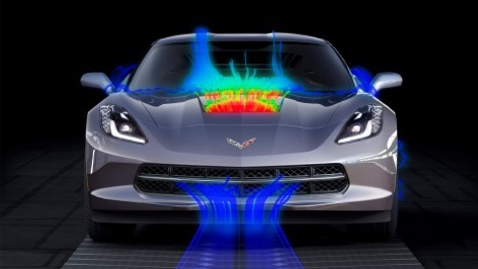
Moving inside, you might just forget this is a Chevy. From the stitched leather seating and dash, to the carbon fiber dash inserts and the decidedly un-GM-like textured plastics and aluminum trim, this is now, finally, a world-class interior. Fit and finish is better than anything Chevy has ever produced in the past. The C7 Corvette is undeniably a driver’s car – as one of our testers remarked, getting into the Stingray is like dropping into an F-16 fighter jet… everything important is oriented to the driver; the passenger is expected to just sit down and hold on.
The heated seats work great, but the unexpected touch is the ventilated seats which keep your back side cool when running the air conditioning isn’t advised or necessary. With the standard Targa top, the Stingray is really two cars in one: a hardtop coupe that is welcome at the racetrack, and an open air roadster for that beautiful summer day. Removal of the top involves moving three latches and placing the lightweight roof in the rear hatch where it can still be tilted up to access the rear storage area. While the operation is easier with two people, doing it yourself is a breeze.
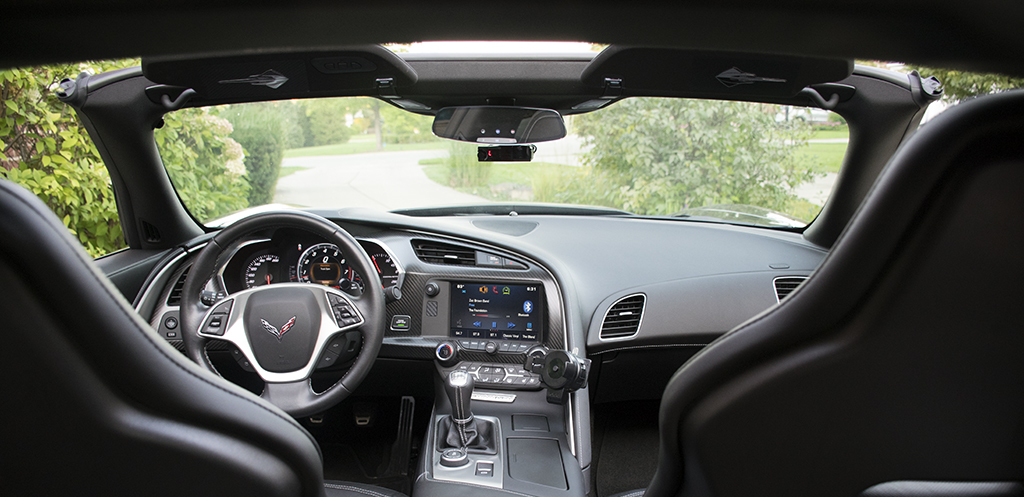
So how does 460 horsepower work on the road? Quite well, it turns out. The Corvette comes with five driving modes: weather, eco, touring, sport and track, any of which can be selected on the fly. If you optioned for GM’s excellent, third-generation magnetic ride control, you also get Chevy’s Performance Traction Management, which gives you five additional track modes with varying degrees of electronic nannies to keep you out of any trouble, or not if your prefer. For the standard seven-speed manual, eco mode will allow the big V-8 to shut off half its cylinders while cruising to deliver an EPA rated 29 mpg on the highway. With the 8 speed automatic, cylinder deactivation is available in every mode. The Corvette’s now-trademark magnetic ride suspension transforms the Stingray from comfortable GT cruiser in weather, eco or touring modes to canyon carver and track beast in Sport and Track modes. In fact, the suspension is so stiff in track mode that Chevy advises not use it on the street, fearing a possible bent rim. With the optional performance exhaust system, each mode also dictates how loud the exhaust bellows, with sport and track opening actuators in the exhaust that only open in the other modes under full throttle. Through the MyLink interface, you can customize things like steering feel, throttle response and exhaust sound in any of the driving modes – a nice touch.
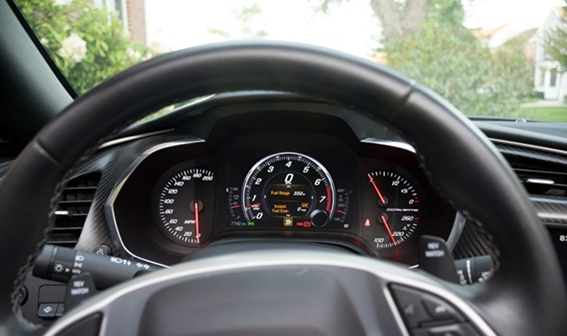
From the driver’s seat, everything you want and need is within reach, and oriented towards you. The steering wheel can control the audio system, bring up the voice commands, operate cruise control and change the instrument display. Want to know your 0-60 times? There’s an app for that, but the available performance settings will tell you so much more. At any time you can call up your tire temps and pressures, the temperatures of your transmission, differential and engine, and just what exactly the electronic limited-slip differential is doing. You can even display a horsepower gauge right next to the tach! If performance data isn’t your thing, you can call up instant or average gas mileage, or have the display show audio, telephone or navigation information. The color HUD can basically show just about any information you select including speed, two different tachometer styles, GPS navigation commands and even your blue-tooth phone call info. There really is no need to ever take your eyes off the road.
About the Corvette’s navigation: it’s certainly not the prettiest map we’ve seen in a car (a far cry from an Audi A3), but functionally it works well. One of its best features, however, isn’t even in the car. Using the OnStar smartphone app, you can search for your destination online and send it straight to the car’s navigation system, super easy and much more pleasant than trying to enter items on the not-an-iPad touchscreen.
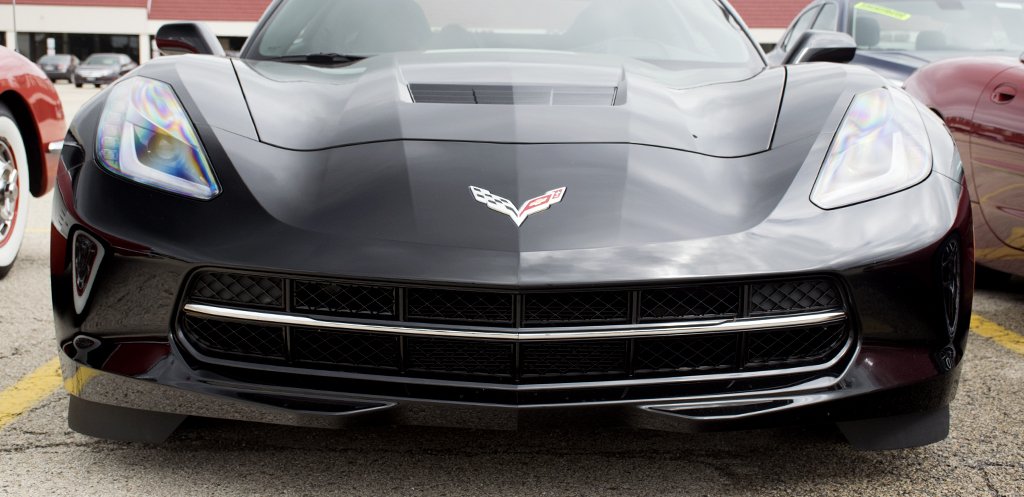
Long gone are the days of the American land yachts whose front bumpers would get to their destination a half-hour before you would. Most cars these days try to present an open view of the road in which the hood simply dives out of view. If that’s what you’ve been driving, the view out of the Stingray will take some getting used to. Big shoulders above the front wheels will have you reminiscing about Speed Racer’s Mach 5, and the car will feel bigger than it is at first. This feeling goes away with some time behind the wheel, and you come to appreciate the beauty of the view while still enjoying a clear look at the road.
On city streets, touring mode takes the pain out of most bumps and shallow divots, but you’d still be wise to avoid any true city potholes. When you hit the country switchbacks, that’s when sport mode comes alive with increased steering feel, throttle response and shortened suspension travel. The Stingray is composed and docile, until you tell it not to be, then it will try to slap your eyeballs against the back of your skull. There is so much torque available anywhere in the power band that you can break the tires loose in any of the first three gears, and without the stability control or a very practiced hand, you can easily coax the tail into trying win a race against the front bumper. What this means in real terms is that if you do not want to end up on a YouTube video called “Corvette Crash Fails,” do not turn the stability control off!

Of course, we have to talk about the new seven-speed manual transmission. First, kudos to Chevrolet for not going along with the current trend of ditching a manual option altogether in favor of some kind of automated-manual transmission. There is nothing quite like the thrill of rowing your own gears, perfectly matching a heel-toe downshift and the harmony between man and machine that results. Chevy went a step further, however, and added a rev matching feature that the driver can activate by pulling either of the paddles behind the wheel. Not only did Chevy not have to redesign the steering wheel from the automatic trans, which uses these paddles for gear shifting (thereby saving money), but they added one of the best features you can have with a manual trans. Even if you’re pretty good at heel-toe downshifting, you’d be very hard pressed to match, much less beat, the rev match system. It just works, every time, perfectly. The clutch is also nice and light, not requiring much effort. Driving this car in bumper to bumper traffic is easier than you’d think, without eliciting complaints from your left leg.
Is this the perfect shifter then? In a word, no, but its benefits far outweigh its imperfections. The shifter feels beefy but can be a bit notchy, something we’re going to address on this car by swapping out the stock shifter with a short shifter by MGW in a few weeks. It is also easy to accidently find fifth gear when looking for third, or to find seventh when looking for fifth. That goes away with practice, but in a hurry, it still happens occasionally. Thankfully, the HUD and dash will tell you exactly what gear you’ve landed in. Then there’s the always annoying 1-4 skip shift feature used to obtain higher EPA mileage figures by locking out second gear under light acceleration. Fortunately, it is easily and cheaply defeatable with the right aftermarket part.
So how fast is this car? Even on the seven speed, launch control is available, but if you do it yourself, and hook it up just right, the a Stingray will do 0-60 will in less than four seconds and the quarter mile in 12.2 seconds at 117 mph on its way up to a top speed of 181 mph. Acceleration is a blur of wheelspin, powershifts and beautiful V-8 music. The wide torque-band means power is available anywhere up to the 6500 rpm redline. Be careful as burnouts are far too easy in a car sporting nearly $2,000 worth of tires.
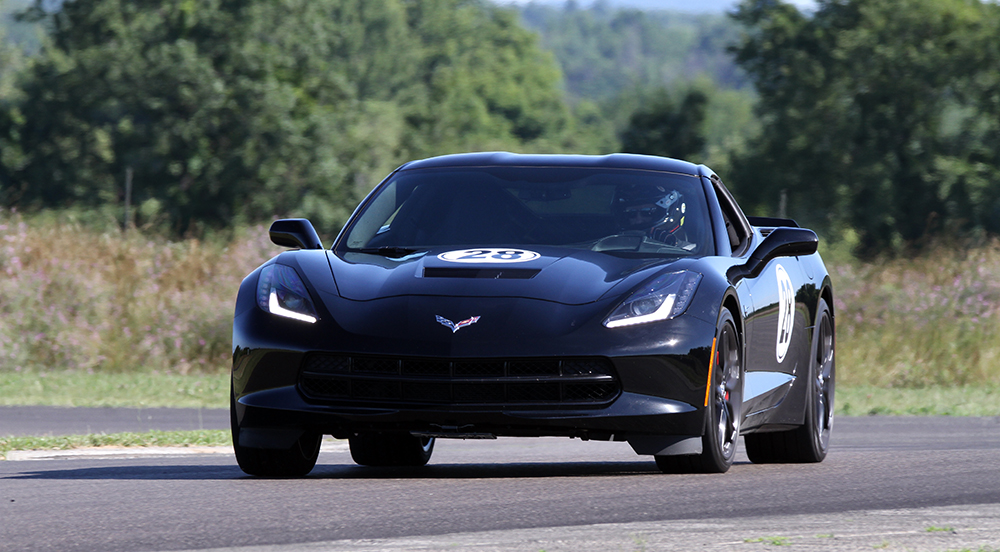
Photo credit: RedlinePhoto.com
So we know the Stingray goes like hell, but how does it turn? On the street, with its 1.02g’s of lateral grip from those wonderful Michelin Pilot Super Sport tires and tight chassis, the Stingray will out-corner just about anything else out there not three or four times its price. The Vette attacks on ramps with such speed and confidence that you’ll find yourself doing triple digits by the end of the ramp, hopefully outside the presence of a state trooper. With its 50/50 weight distribution, the C7 is so balanced that it gives literal meaning to the phrase “straighten the curves” – it simply begs for more speed as it remains nearly flat in even the hardest corner. It’s the kind of supercar-like grip you’ve been dreaming of since you were a kid staring at those Countach posters on your wall. The fact that this Corvette would run circles around that Lamborghini shows just how much the Corvette has grown up.
The Corvette remains an absolute performance bargain, with the base 2016 Corvette Stingray starting at $56,395 (including destination). Add the Z51, 2LT and performance packages, Performance Data Recorder and Magnetic Ride Control and the sticker rises to $69,440. Our similarly equipped 2015 Z51 stickered for $69,040 and also included painted calipers, black painted wheels, a “Stingray” plaque forward of the shifter and a trickle charger for the battery (for snow belt hibernation). That’s an extra $1,200 of equipment for $440 less, but the 2016 model does come with twin front cameras that will help avoid crunching the Stingray’s pretty nose on a parking curb, Apple’s CarPlay and a small price increase. For about $70,000, the closest competition is the new Cadillac ATS-V Coupe (sporting slightly more power, but more weight), the slower Porsche Cayman GTS and the 6-cylinder Jaguar F-Type Coupe (now available in a proper manual). To get similar performance out of the last two makes, you’d have to spend at least $20,000 more than a comparable Stingray, and at that price, the Z06 puts all other dollar-for-performance comparisons to shame. Of course, lurking in the background is the best horsepower value in the world, that being the Challenger/Charger Hellcats, but those beasts are happiest on the drag strip rather than the road course.
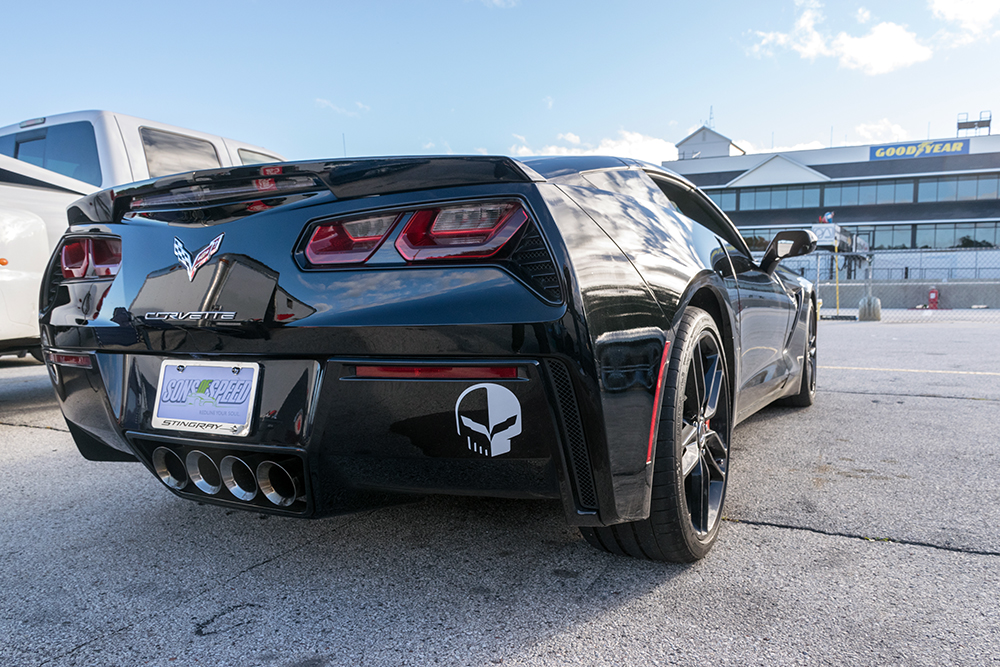
So is the Stingray the perfect sports car? Well, no car is perfect, and the Stingray is no exception. The first thing that will irritate and annoy you is the placement of the rear hatch release button, which will cause you to unintentionally and repeatedly open the hatch on entry. Like any sports car, the Corvette is not easy to get in or out of, and the seats are quite narrow. Large and tall passengers will find it especially difficult to fit comfortably. The rear weatherstrip for the top can be easily torn if not carefully handled when replacing the top, and the MyLink interface is very slow to react at times. The shifter’s gates are not always easy to find, and the skip-shift feature is annoying. But while these quirks are at times bothersome, the good news is they are all fixable (are you listening, Chevy?) and in no way detract from the fact that this truly is the best sports car America has ever built. Fifty years after winning America’s heart, the new C7 just wins.
Be sure to read our next article we take the C7 to the track and explore the true capabilities of the car.
